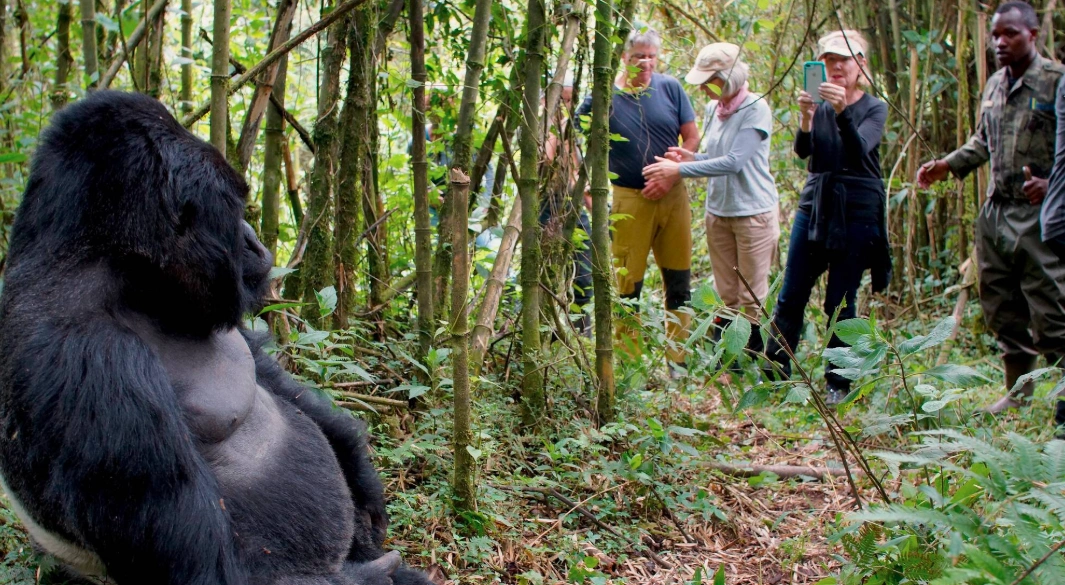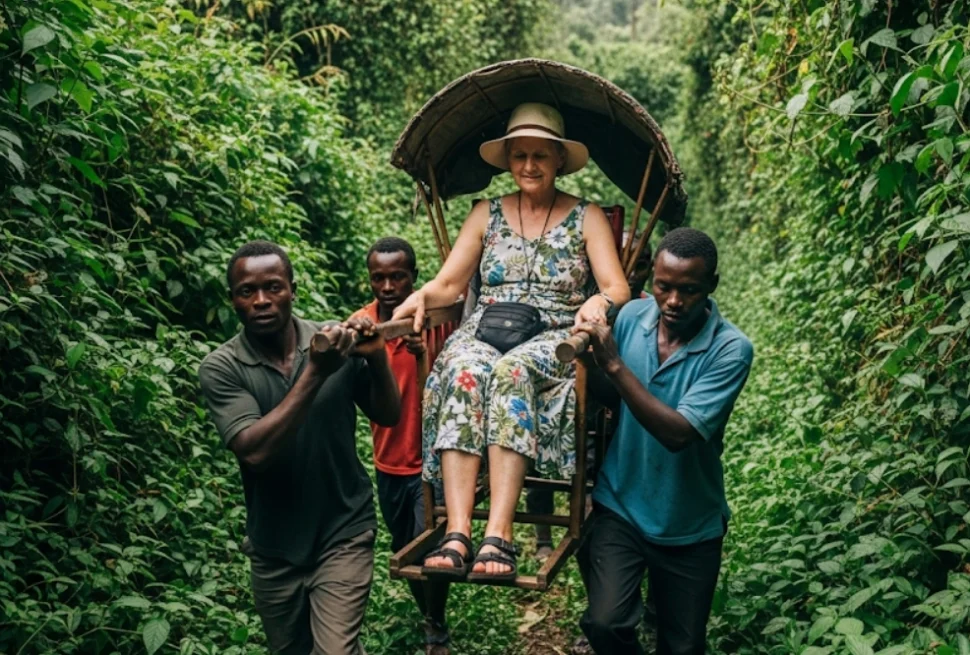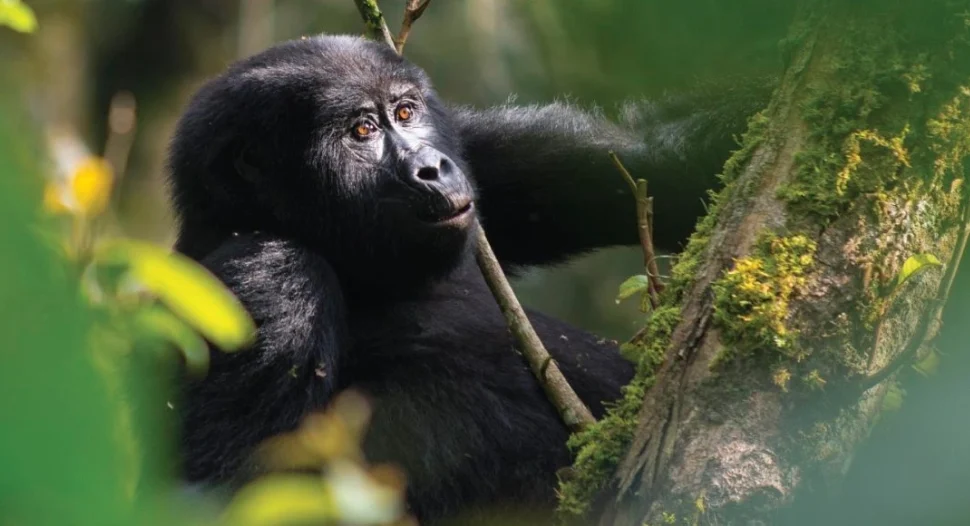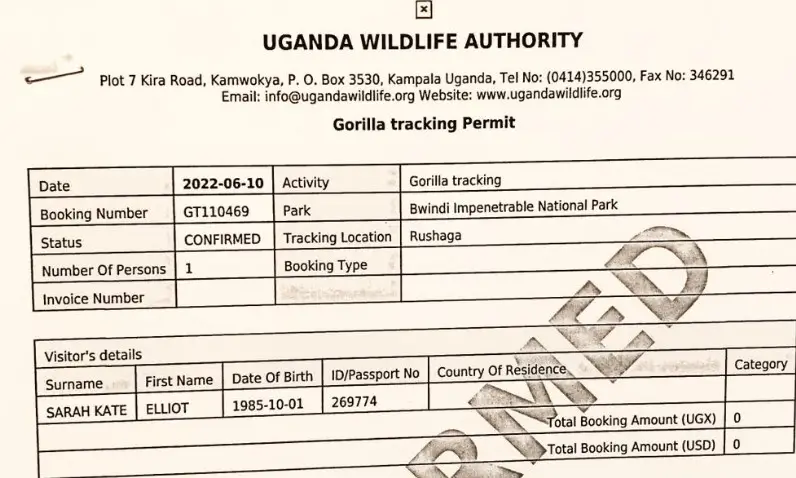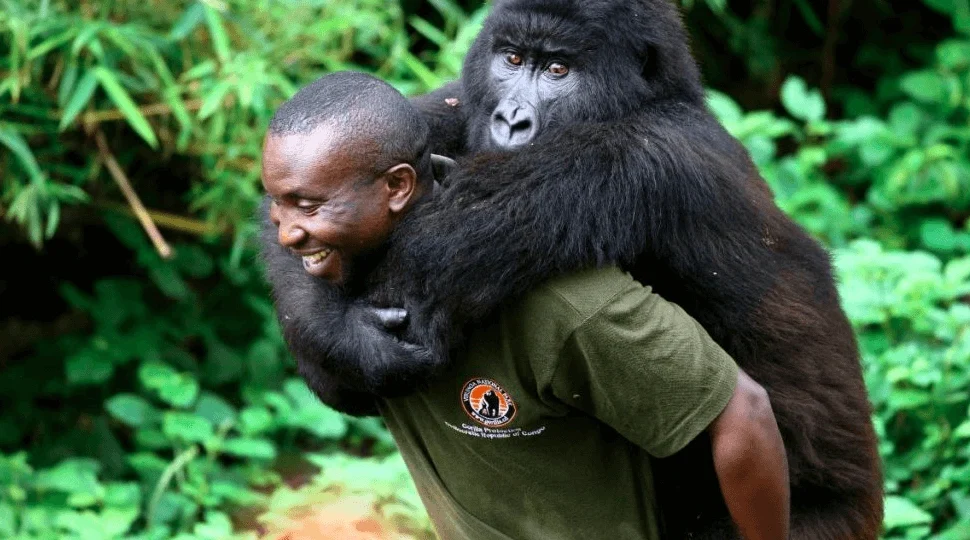“Climbing to see the gorillas is like finding yourself in a National Geographic documentary — only you’re sweating through it.”
Let’s be honest. Gorilla trekking is not a walk in the park. It’s a real hike — sometimes through dense jungle, sometimes in mist, sometimes uphill. But it’s also one of the most life-changing experiences on Earth. So, who’s it really for?
Is it only for young, fit adventurers? Or can older travelers and people with limited mobility also take part?
Let’s break it down.
Gorilla Trekking Isn’t Just for Athletes
Contrary to what you might think, you don’t need to be a marathon runner or jungle ninja to see mountain gorillas. Most people with average fitness — think weekend hikers or regular walkers — can complete the trek.
But here’s the catch: every trek is different. One group might find gorillas in 45 minutes on flat terrain. Another may hike four hours uphill before they catch a glimpse.
It’s part luck. Part preparation.
That’s why understanding what the trek involves — and planning accordingly — matters more than trying to power through.
We explain the physical intensity, age limits, preparation tips, and accessibility options below. This is the ultimate guide for anyone wondering: “Can I do this?”
What’s the Minimum Age for Gorilla Trekking?
Uganda has a strict minimum age of 15 for gorilla trekking.
Why? Two main reasons:
- Health risks: Children under 15 are more likely to carry common illnesses (like flu or colds) that can be transmitted to gorillas, who share 98% of our DNA and are highly susceptible to human diseases.
- Physical demands: Even though some treks are short, the terrain can be slippery, steep, or thick with vines — not suitable for kids.
If you’re traveling with younger children, consider visiting Queen Elizabeth National Park for a safari or tracking chimpanzees in Kibale National Park instead.
What About Seniors or People with Limited Mobility?
Here’s the good news: gorilla trekking is possible for older adults and people with physical limitations. But it takes planning.
Many seniors in their 60s, 70s — and even 80s — have completed gorilla treks in Bwindi Impenetrable National Park and Mgahinga Gorilla National Park.
Your success depends less on age and more on:
- Your current fitness level
- How much help you’re willing to use (yes, you can be carried — more on that soon)
- The group assignment you request (some gorilla families are closer to the trailhead than others)
💡 Insider tip: When booking your permit, ask your tour operator to request a group with a shorter or flatter route. Rangers try to accommodate based on fitness and age when assigning groups at the briefing point.
And if you’re crafting a larger Uganda itinerary, combining gorillas with something gentler like Lake Bunyonyi or Lake Mburo can balance the energy demands.
Porters: Your Secret Weapon on the Trail
If you take one tip from this post, let it be this: hire a porter.
For just $15–$20 USD, a porter will:
- Carry your daypack
- Give you a steady hand over tricky terrain
- Help you conserve energy
Even fit travelers rave about how much easier the trek was with a porter. And here’s the bonus — you’re supporting a local community member who might otherwise turn to illegal activities to make a living.
So yes, it’s ethical and practical.
Want to know what’s in that daypack? Here’s our full gorilla trekking packing list.
Sedan Chairs: Yes, You Can Be Carried
Let’s say you have severe mobility limitations, or you’re recovering from surgery, or hiking just isn’t in the cards.
Uganda has a solution: the sedan chair, also called a gorilla stretcher.
This isn’t a fancy tourist gimmick. It’s a legitimate accessibility option — a strong, reinforced chair attached to poles and carried by a team of 8 porters.
Here’s how it works:
- You’re carried to the gorilla location and back.
- Porters rotate and take breaks.
- It’s organized ahead of time (so your operator needs to plan this in advance).
- Expect to pay around $300–$500 for the service, depending on the route and park.
For those with health conditions, this can make the difference between watching gorilla trekking on YouTube… and living it.
👉 If you’re considering this option, talk to your doctor first and make sure you have clearance to travel to remote, high-humidity environments. You may also want to read up on the specific parks where you can see gorillas in Uganda, as terrain and logistics differ slightly.
How Long Is the Trek — Really?
This might surprise you.
Gorilla treks can last anywhere from 30 minutes to 7 hours, depending on:
- The location of the gorilla family that day
- Your group’s pace
- Terrain and weather conditions
Once you reach the gorillas, you get a strict 1 hour with them — no more, no less.
Even short treks can be challenging. Bwindi is called “Impenetrable” for a reason — the terrain is steep and can be muddy after rain. Mgahinga, on the other hand, tends to be more open and is sometimes easier for older travelers.
Preparing for the Trek — Fitness, Gear & Mental Readiness
So you’ve decided to go gorilla trekking in Uganda. You’ve checked your age, mobility, and expectations. Now the question is: How do I actually prepare for this?
Whether you’re fit-but-nervous, out-of-shape-but-determined, or somewhere in between, this second half of the guide is for you. We’ll cover:
- Training tips to build endurance
- How to mentally prep for the unknown
- Which gorilla families are ideal for limited mobility
- What to pack for extra support
- Key phrases to use when booking
Let’s go.
Training: It Doesn’t Have to Be Hardcore
You don’t need to be ripped. But you do need to be ready.
Here’s the good news: simple, consistent movement over 3–6 weeks can dramatically increase your stamina.
Try this weekly routine:
- 3–4 brisk walks of 30–60 minutes. Choose hilly routes if you can.
- Stair climbing (or step-ups) twice a week.
- Stretching or yoga 1–2 times weekly to improve flexibility.
- Optional strength training — squats, lunges, core work.
If you’re over 50 or managing chronic pain, work within your limits — but do something. Even daily walks matter.
💡 Want to mimic the conditions? Wear a daypack with 2–3 liters of water and walk in trekking boots to break them in.
Mental Preparation: Expect the Unexpected
Physical prep is one part. Mental readiness is the other.
Here’s what nobody tells you: sometimes the hike gets steep and exhausting right before you see the gorillas. And the terrain might be muddy, buggy, or hot.
But here’s the flip side — the moment you see them, everything changes.
Silverbacks thump their chests. Infants tumble through vines. Mothers lock eyes with you like they’ve known you forever.
You forget the burning thighs. You forget the sweat. You just feel awe.
So when the trek gets tough, remind yourself: This isn’t forever. The gorillas are.
Which Gorilla Groups Are Easier to Reach?
Not all treks are created equal. In Uganda’s Bwindi Impenetrable National Park, there are four sectors, each with its own trailheads and gorilla families:
| Sector | Known For | Terrain Difficulty |
|---|---|---|
| Buhoma | Shorter treks, good for seniors | Moderate |
| Ruhija | Moderate distances | Steep at times |
| Rushaga | More families, longer hikes | Strenuous |
| Nkuringo | Scenic but challenging hikes | Very steep |
For those with mobility limitations or less fitness, Buhoma is the top choice.
In Mgahinga, there’s only one habituated group — the Nyakagezi family — but the trails are often flatter and more open than in Bwindi. That’s a plus if you’re nervous about jungle thickness.
👉 When booking, tell your guide:
- Your age and fitness level
- Whether you have knee/back issues
- If you want the shortest trek available
Accessibility Gear: What to Bring
Whether you’re trekking with a bad knee or want to reduce strain on your body, these gear additions help:
- Trekking poles: Absolute lifesavers for balance and support.
- Knee braces or ankle supports: If you have previous injuries.
- Moisture-wicking clothes: Sweat happens. You’ll thank yourself.
- Gloves: Protect your hands from branches, thorns, and the odd fall.
- High-traction boots: Slippery mud and steep inclines demand good grip.
Combine Gorilla Trekking with Recovery Days
Want to keep things balanced? Pair your trek with a relaxing destination. Here are some great post-trek add-ons:
- Lake Bunyonyi: Serene views, canoe rides, ideal for rest.
- Queen Elizabeth National Park: Wildlife drives with minimal walking.
- Murchison Falls National Park: See the Nile explode through a gorge.
- Lake Mburo: Easy nature walks and boat safaris.
Mixing adrenaline with ease makes your trip not only more enjoyable — but more memorable.
Final Booking Tips for Seniors & Mobility-Conscious Trekkers
- Book early. Limited spots exist in “easy trek” groups, especially in Buhoma.
- Communicate clearly. Tell your tour company early about mobility, age, or medical issues.
- Request a sedan chair if needed. These must be arranged in advance — don’t expect one at the trailhead.
- Don’t skip travel insurance. Choose a plan that includes emergency evacuation, just in case.
Gorilla trekking is one of those rare experiences that people talk about for the rest of their lives.
And you don’t have to be young or super-fit to do it. You just need the right plan, the right gear — and the right mindset.
If you’ve been dreaming of standing face-to-face with a mountain gorilla, don’t let age or mobility stop you.
There’s a path forward — and it leads through the forest.

